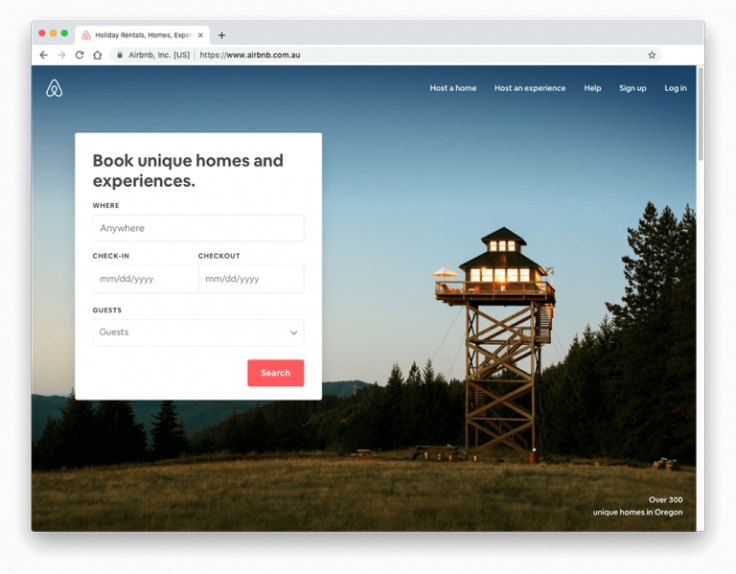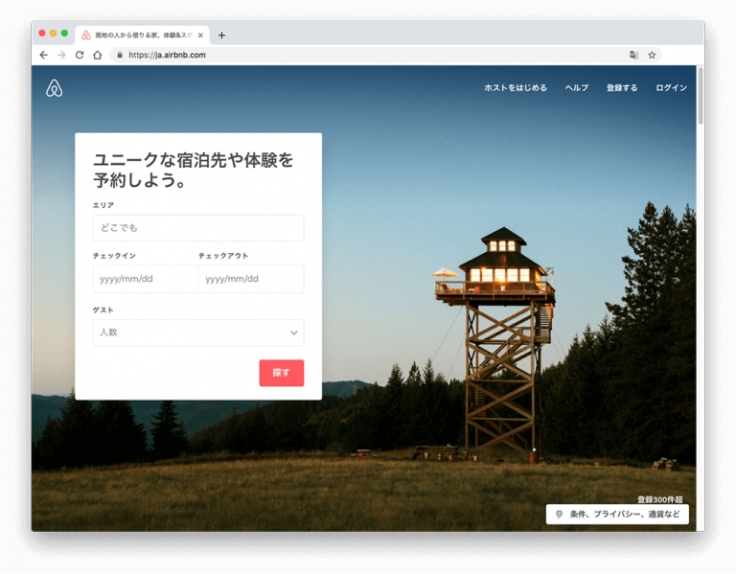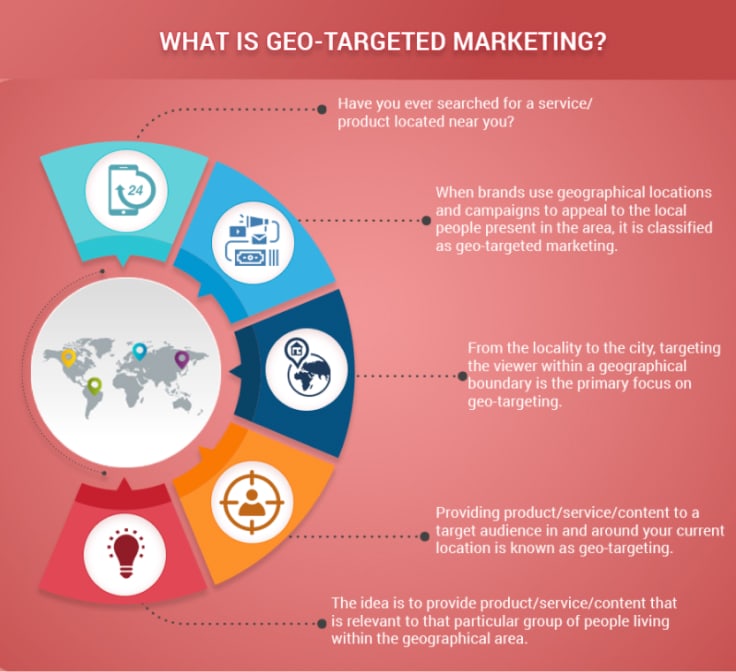Website optimization for conversions is vital for any business. It doesn’t matter what the aim is – it could be newsletter subscribers, advertising impressions, increased sales or anything else. Everything you do with your website in this ever increasing digital world will have a massive impact on your business.
Looking at website optimization means looking at data. Much like any other experiment, you change and modify your site and then let the traffic tell you what you need to know. This data can provide intelligence and insight into your customers and their reaction to your business. Ultimately, this data is so important that it should be the backbone on which your business decisions are made.
But where does location data come into this? Your customers range in age, gender, income and more. Importantly, people on your site will arrive from all over the world. They’ll be speaking different languages, using different currencies and experiencing different climates. So, while you might have a .com website, you may find that you’re being accessed from all over the world.
With all that said, how do you make sure that you’re catering to your audience? Especially when your audience can vary so wildly. The answer lies in location data and, more specifically, geo-tracking and targeting.
What is location data?
Location data is collected from online visitors to your website and pinpoints where and how they’re accessing your brand. This provides insight into how your audience behaves and moves in real time and real life.
Location data adds further context to your customers’ behavior. As well as knowing what they’re doing, and how they’re doing it, you also know where they’re doing it. It can give you a real world view on your customers’ movement and behavior.
How can this be used?
Location data can be used to ensure that your existing digital marketing and infrastructure cater to a large, varied audience. Like screen sharing, you can control exactly what the people you’re connecting with see. It also allows you to ensure that your web traffic is receiving the most relevant content that will lead to conversion optimization.
This can be achieved through geolocation and targeting. Geolocation data is just location data that has been collected about your customers. It’s the most widely available, basic data that’s collected by tools to allow you to geo-target your audience wherever they are. It’s freely available and, if you already have a website, is being collected for you in the background.
Geo-targeting is the active use for geolocation. Once you’ve identified where your audience is, you can personalize specific content for that location. You can set the parameters for this as widely as you would like, targeting different countries, states, or even cities.

An example of simple geo-targeting is SERPS (search engine results page). This is where you can type in a search term in a search engine, and it will return relevant results to you. Google uses your location here to ensure that the results will be more likely to be suitable for you. If I typed ‘lunch spots’ into Google while I was in London, UK, I would get results showing me suggestions of lunch spots in London. If I was in Texas, USA, I would get results showing suggestions for there instead.
Let’s take a look at some examples.

On H&M’s UK site, the writing is in English, there are sign in/favourites/bag icons in the top right corner and a notice has come up providing information about cookies. There is also a search bar on the right hand side, some links to extra information and a menu at the top.
Compare this with the screenshot of the H&M website for Egypt.

Here you can see the model is different, the writing is initially in arabic but there’s an option to change to English, and a different set of quick links above the picture. There are also no sign in/ favorites/bag icons. With different rules regarding cookies, there’s no notification either. These changes are subtle but will have been made based on data compiled from users in the two countries to optimize the site for customer use.
This example shows how using the location will enable you to serve personalized content and information that is relevant to your audience. Increased relevance naturally increases conversions, and taking advantage of location data is a great way to stay relevant to your audience.
Why is this important
Geo-targeting is widely used, and it’s vital for improving user experience. You can use it to contact customers with personalized email campaigns, adjust your website offerings, or show off the nearest physical store.
Most selling businesses will have defined consumer groups for their products or services. The data that they collect helps them to group their consumer groups together and define their customer segments and/or personas. This essentially is the key to personalizing the customer journey for each segmented group.
When it comes to location, customers in different places are likely to have different buying habits and reasons for using your business. So, in order to optimize your lead conversion rate, you’ll need to be providing customers with the information that they want, and give them reason to choose you over your competitors. Personalized content based on location is a great way to speak directly to your customers.
A very basic adjustment is language choice and preference according to location. geo-targeting enables sites to provide content to audiences in different languages based on visitor location. This can be expanded upon to narrow down your target customers further.
Some countries with the same language can have some deviations in terms of the terminology used to describe things. Using geo-tracking and data insights will allow you to tailor your language to suit these deviations.


Websites that do this well will go beyond language choice, and change their offering according to the location the audience is accessing from. A site selling clothing, for example, might change the clothing options based on time of year. Other adjustments include currency, delivery info, offers or even more cosmetic things like colours, images and tone of voice.
It’s impossible to reach optimization with your conversion rates if you’re running one generic campaign for all English audiences. And although you might think it’s too much to create different campaigns for different areas, it really does make a difference to the customer journey, and thereby your bottom line.
This can be done cheaply and easily by just changing a couple of words. It can also be done on a much wider scale. There are also conversion rate optimization tools now that will help make this even more straightforward.
In this day and age, geo-targeting is essential to understanding your customer. It allows you to accurately target your customer segments both online and in physical stores. You can use the data collected online as a way to predict customer behavior trends, sales and make decisions in the supply chain as necessary.
It also allows for direct targeting to individual customers when they are near a physical store – like sending vouchers or advising of a sale, for example. If users in a specific area are showing interest in something specific, you should ensure that product is available in local stores. It could even suggest where a new store might be opened!
Combining your tactics

Understanding your customer’s motivation is a key part of generating marketing insight. For your website, this can help you serve content and enable website builders that directly answer their needs. It also allows you to remove any pain points in the customer journey from call center problems right the way through to issues with making payments online.
This whole process is vital when it comes to conversion rate optimization and refining your content is something that needs to be regular and consistent. Geolocation and targeting are fantastic tools that allow you to start this refinement, but they aren’t enough by themselves.
By combining geolocation and targeting with demographic data and psychographic data, you get a better feel for your customer and this will allow you the chance to further personalize your communications with them.
Other types of targeting you could consider in combination with geo-tracking include:
- Source of traffic (organic, direct, social media etc.)
- Which pages are visited
- What search terms lead to your site
- How much time is spent on each page
- How many pages are visited
- How frequently visitors visit your site
By combining these techniques with location data, you can create an excellent targeted marketing campaign. This is becoming simpler and easier as the tools available become more sophisticated and their functionality improves.
Taking an omnichannel viewpoint
For businesses that operate on more than one platform, say online and in a physical store, it’s hugely important to take a wider view on conversion rates. Most people have experienced a website pop up asking for permissions to know their location. This will also be detailed in the site’s terms and condition, their privacy policy under data usage and may be indicated by trust badges.
But how do you make use of this data in relation to physical store sales? Device behavior is one way that you can fill these gaps. You can measure how effective your online content is on conversion rates in physical stores.
This data can help you to understand how your customers engage with your brand over multiple touch points and attribute the conversion to their sources. This means you can identify where your customers are interacting with your brand.
This can be done via social media interactions or customer support calls with a call recording service.This can all be done while also moving your customer along the journey to make the sale.
For example, a customer might come across your store after seeing a billboard poster. They may then visit one of your physical stores and use the displays in store to choose the products they are most interested in. They don’t make the purchase instore, but instead return home and go on your website to complete that purchase.
Without an omnichannel view, this journey may look like it was a direct site purchase. This would be incorrect, and give you an inaccurate view of the factors at play. Here there were actually multiple touch points for the customer along the complex omnichannel process that guided the customer’s purchase.
Geolocation data can help you to get an even more holistic view of your customers’ behavior. After all, the more data you can get hold of that gives you a window of this behavior, the easier it is to review your marketing strategy and what’s happening with your conversion rates.
Cross channel interactions will also allow you to deepen your understanding of your customers’ experience when engaging with different touch points no matter if it’s a small business phone system or capturing feedback on social media.
Generating content is easiest when you have a clear understanding of user intent. Geolocation and tracking can do a fantastic job of providing insight into your customers’ lives and engagement with your brand. Used in conjunction with other targeting tools, you can gain an even deeper understanding of customer behavior and motivations. As a result you can target audiences that are most interested in your brand, or have a need for your products, with personalized content that will optimize your conversion rates.
data


Indeed, coz nowadays a lot of people more and more are using Google maps and GMB
Thank you!